According review of the legendary Soviet lens Helios-40-2 1.5 / 85 many thanks Alexander pamp Neborachko.

Helios 40-2 85mm F1.5 lens overview
In my vote on best soviet portrait lensHelios-40-2 is the undisputed leader, while having a huge margin. The second place is held by the most massive fixed-telephoto Jupiter-37A, and the sharpest outrageous closes the top three Kaleinar-5N... Therefore, without further ado - Helios-40-2 is ideal for portrait photography.
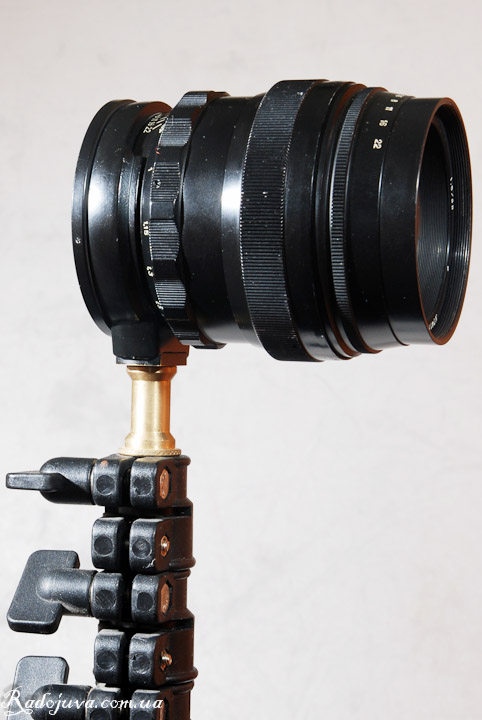
Helios-40-2 has a tripod socket and black color
TTX Helios-40-2
The weight: about 900g
MDF: 0.8m
Focal length: 85mm
Front Filter Diameter: 67mm
Factory manufacturer: Krasnogorsk Mechanical Plant named after S.A. Zvereva
Aperture Limits: F1.5-F22
Number of aperture blades: 10
Optical design: 6 elements in 4 groups, Biotar scheme
Resolution: 36/17 lines / mm (center / edge)
There are lens modifications, in particular, the differences may relate to the diameter of the filter and the minimum focusing distance. Also, there is an earlier “white version” of the lens called simply Helios-40. Read about the differences below.
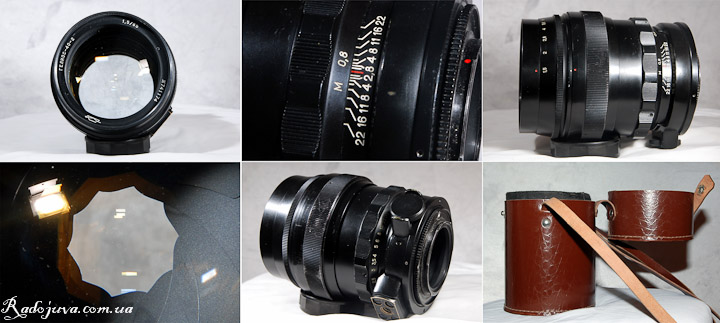
View Helios-40-2 from different sides. Case for Helios-40-2 and aperture view.
I strongly recommend that you read the materials on Helios-40 (2) on club.foto.ru, namely in the section about Helios-40 (2). I also advise you to take a look at Helios-40 review by Sergey Elizarovthat has a wonderful comparison of Helios-40 (2) and its ancestor Carl Zeiss Jena Biotar 1,5 / 75. Fans of rigorous technical tests will love the article. photozone.de about Helios-40-2. Interesting conclusions, near which you simply can’t pass by, on the page Myths and Reality Helios-40 (2)... Another brand new head-to-head test Helios-40-2 and Carl Zeiss Planar 85 / 1.4 c / y on Dmitry Evtifeev's blog... Below, in fact, about the lens from Radozhiva.
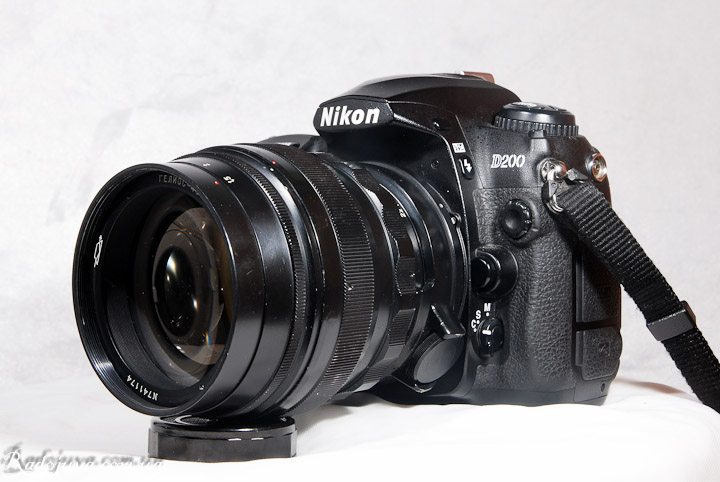
View of the Helios-40-2 lens on a modern central control wheel
Helios-40 and Helios-40-2 is a modification of the lens Carl Zeiss Jena Biotar 1,5 / 75. Helios has a slightly longer focal length. The optical design is the same - 6 lenses in 4 groups. Helios-40-2 classic Planar (Biotar). Please note that in this review in my hands was exactly Helios-40-2 and I write about him. My copy of MDF has 80cm, and the filter diameter is 67mm, its number is No. 741174. If you take into account the fact that the first two digits in the number of the Soviet lens usually indicate the year of manufacture, then my Helios-40-2 is much older than me and was released in 1974. The lens barrel is slightly frayed, but the lens is in good condition, without scuffs and scratches, enlightenment is in place.
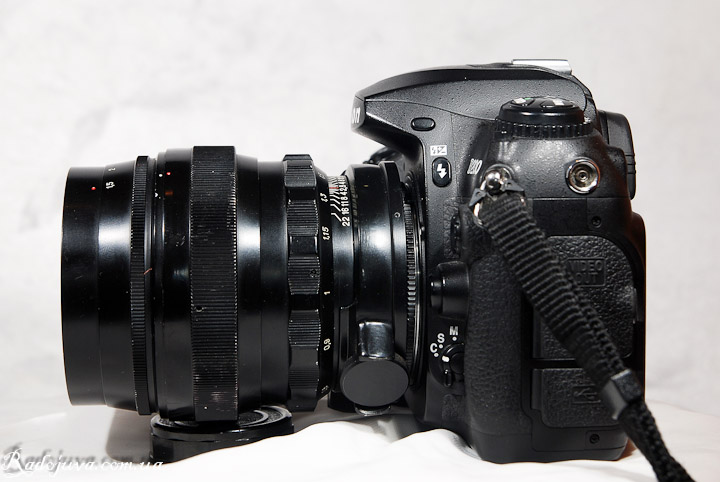
View of the Helios-40-2 lens from the side on a modern central control gear
The main modifications of the Helios-40 lens (2)
- Helios-40 1.5/85 for SLR cameras. Old white version without coloring. Uses M39 × 1/45,2 mounting thread.
- Helios-40T 1: 1,5 F = 8,5cm - option for television cameras. G-40T differs from the regular version of the G-40 by aperture control and camera mount. Helios-40T has only one diaphragm ring. The optical design of Helios-40T is the same. In any case, it will be necessary to saw off the back for installation on a modern digital SLR camera. When you close the diaphragm on the G-40T lens, in the blur zone, you get the same "circular" saw, like his brother G-40. Produced at KMZ (Krasnogorsk Mechanical Plant named after S.A. Zverev, Krasnogorsk.)
- Helios-40-2 1.5/85 for SLR cameras, has a M42 × 1 / 45,5 mounting thread. The main difference from Helios-40 is only in the landing thread, body color and tripod socket. The Helios-40-2 version itself also has options with minor differences. For example, there are options with a 66 mm filter and 1.15 m MDF.
- Cyclops 1.5 / 85 (Aka CYCLOP 1,5/85) for night vision device. The main difference is the different frame and the complete absence of a diaphragm. Perhaps Cyclops has a different enlightenment. There is also a version with the name in Latin 'Cyclop 1.5 / 85'. The lens was produced at ROMZ (Rostov Optical and Mechanical Plant). Overview here.
- New Helios-40-2issued by KMZ in 2012 year. There is a modification Helios-40-2-N 1,5 / 85 or HELIOS-40-2-N 1,5 / 85 under Nikon F and Helios-40-2-C 1,5 / 85 or HELIOS-40-2-C 1,5 / 85 for Canon EOS and HELIOS-40-2 1,5 / 85 for M42 thread. Since 2014, it has a new body design and double-layer coating, without a tripod foot.
- HELIOS-40 F = 8,5cm 1: 1.5 - lens prototype for cameras with bayonet mount Contax-Kiev (the lens came with an external mount). 1950-1951, MDF 1 meter, looks like this.
- Meyer Optik Görlitz Somnium 1:1.5/85mm (2015) - rebranded and repainted Helios-40-2 2012
- Meyer-Optik Gorlitz Biotar 75mm f/1.5 II (2023) – modern Carl Zeiss Jena Biotar 1,5/75
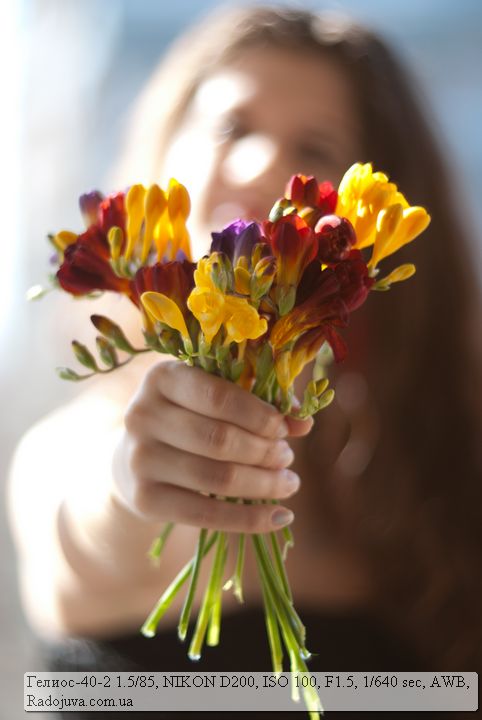
Background blur on Helios-40-2
Myths about Helios-40 (2)
- The first myth is the opinion that Helios-40 was copied from some very ancient and not popular lens. Often give an example Leica Summarex 1,5 / 85 or Cyclops 1.5 / 85, produced at the Rostov optical-mechanical plant. Summarex is a real myth. Regarding Cyclops, everything is just the opposite, Cyclops was a copy of Helios-40 without a diaphragm. Many photos on Cyclops can be found here.
- There is an opinion that the aperture of the lens is actually not F / 1.5, but F / 1.3, motivate this by the fact that according to GOST there was no value of 1.3, therefore they wrote 1.5. Thus, the lens is credited with a much larger aperture.
- There is a myth that with the help of Helios-40 anyone can take a gorgeous portrait. It's a delusion. The lens is very difficult to work with. Achieving good image quality with the right focus point and the right composition will take some hard work. This is due to the fact that Helios-40-2 is sharp at F1.5 only in the center, and the depth of field is very shallow. Only a person with experience in manual optics can cope with Helios-40-2.
- There is a myth that one photographer in his entire life tried the very latest very expensive photo equipment, super modern digital backs, switched from a full frame to a medium and large format, but never found the lens that would give an image that would give an image that he wanted to receive. As a result, he accidentally stumbled upon Helios-40 and discovered the full power of the “Solar” lens, with which he began to create masterpieces. Perhaps this is not a myth. But personally, my opinion is that this is a fallacy, since every photographer who is less self-respecting understands that it is he who shoots, and not the technique, because important how to take pictures, and not by any means. If you are chasing an “interesting” technique, then you can miss the very opportunity to shoot, and sometimes miss your whole life.
- A lot of various information on the Internet and beautiful photos. The myth is that almost all photos come with quite serious processing, at least with an auto contrast or b / w, which does not show a real Helios-40-2 picture. In reality, the raw picture from Helios-40-2 does not look as interesting as after processing. Therefore, just keep this in mind when choosing between Helios and another lens.
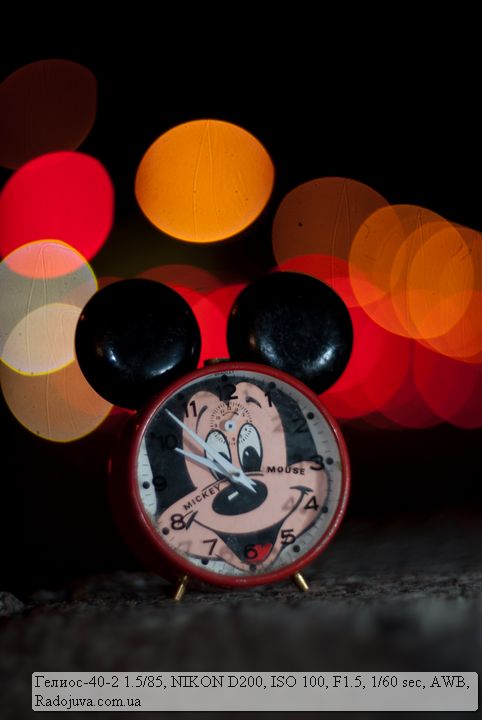
Bokeh on Helios-40-2 85mm F1.5
The main features of the Helios-40-2 lens:
1. In the Helios-40-2 lens design, almost everything is made of metal and glass. The lens is older than me, and continues to please with its work. This is a serious indicator of excellent build quality.
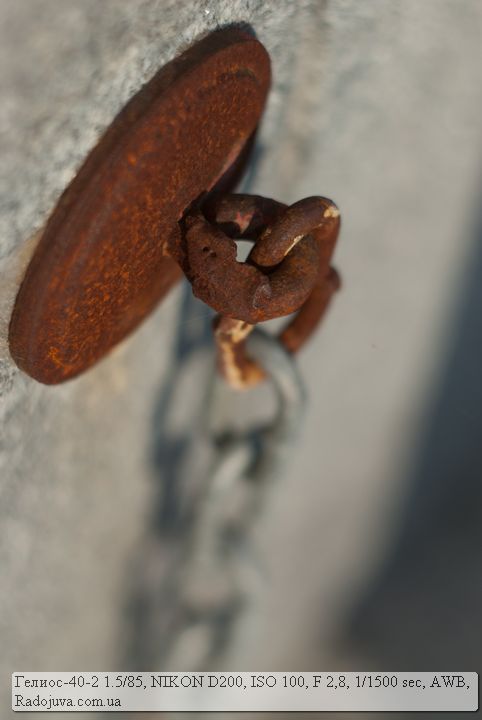
Photo on Helios 40-2 85mm
2. The lens is very large aperture for such a focal length. The maximum aperture value is F1.5. This is only 1.15 times less than the classic F1.4 value for portrait lenses with 85mm focal length. The difference between F1.5 and cheap 85mm fixes with F1.8 is exactly 1.44 times. Big aperture Great for shooting in low light. Possible evening take off not afraid for grease.
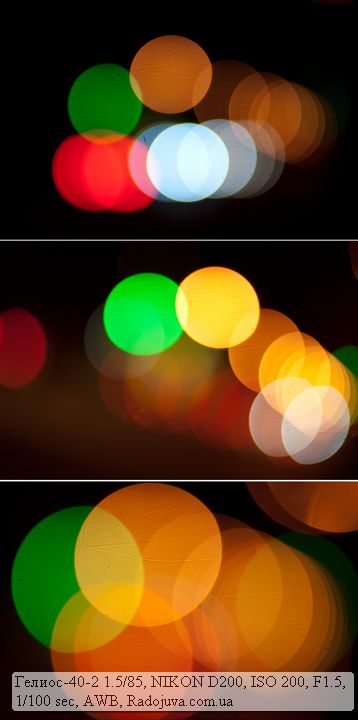
Bokeh on Helios-40-2 85mm F1.5
3. A focal length of 85mm on a Canon 1.6x crop gives EGF at 136mm. For Nikon crop with 1.5x EGF will be 127,5mm. On the crop, Helios-40-2 also remains an excellent portrait painter. The lens can and should be used at full frame, unlike Nikon DX or Canon EF-S lenses.
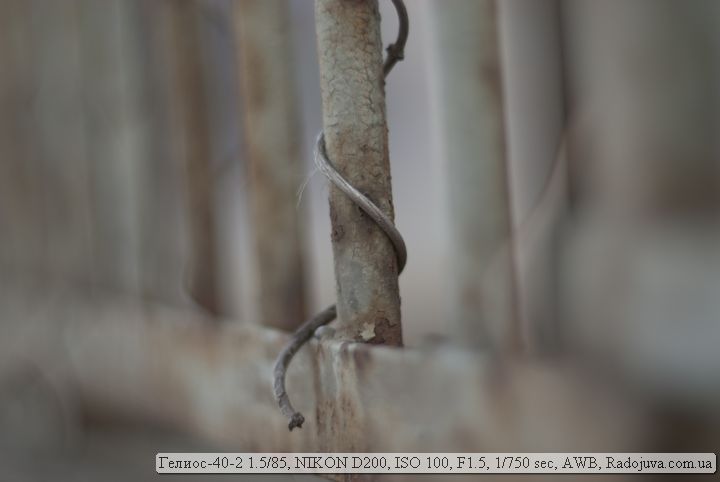
Photo on Helios-40-2 85mm F1.5
4. The lens has an additional aperture presetting ring. The aperture ring itself is located in front of the lens, and the preset ring is in the middle. Moreover, the pre-installation is very convenient, since its ring has a large grip. This is one of the few lenses where the aperture presetting ring is really handy. At the same time, the lens does not have a semiautomatic iris control (it does not have a diaphragm pusher for cameras).
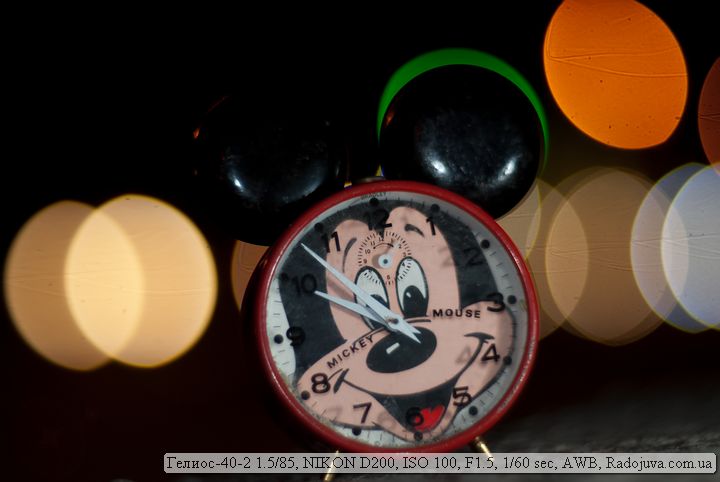
Bokeh on Helios-40-2 85mm F1.5
5. The focus ring has a smooth ride. A serious drawback of Helios-40-2 is the fact that the focusing ring is set too close to the camera mount. It is not very convenient to twist it. And even worse, the tripod socket clamp, which is located even closer to the bayonet, interferes with focusing. First, instead of focusing on focus, you twist the largest ring out of habit - the aperture preset ring. It's a little unnerving, but you get used to it over time. The focus ring is nut-like, not flat.
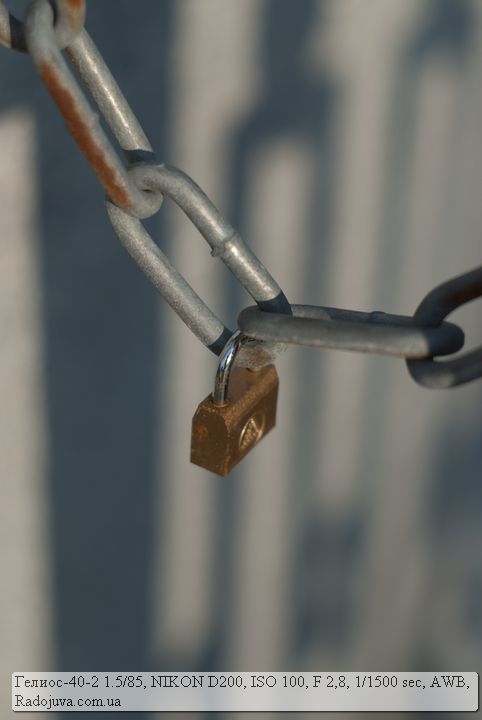
Photo on Helios-40-2
6. Helios-40-2 has a tripod socket. This suggests that the lens is really heavy, the clamp is near the mount to the camera. The clamp can rotate 360 degrees on the lens and is fixed with a special lock, which twists and clamps the clamp. Tripod socket is standard.
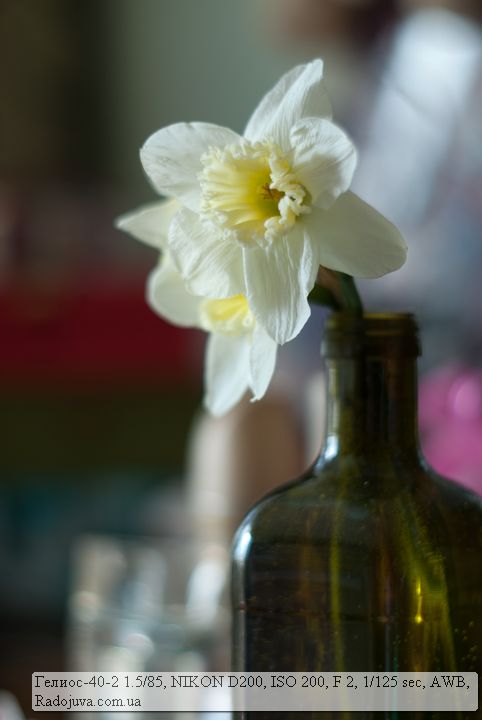
Sample photo on Helios-40-2
7. The lens Helios-40-2 10-blade aperture... The number of petals is more than average, but when it is closed, a hole is formed that looks like a circular saw. Luminous points in the out-of-focus area on closed diaphragms turn into a “circular” pattern. The lenses Tair-11A, Jupiter-37A, Jupiter-11, Jupiter-9 have even more petals and they form a fairly even hole without nuts and gears, therefore, they are more suitable as a portrait lens with closed diaphragms. Helios-40-2 is saved only by the fact that it gives the most interesting (from an artistic point of view) picture on a fully open aperture F1.5. Below is an example of a photo with circular saw blades in the out-of-focus area.
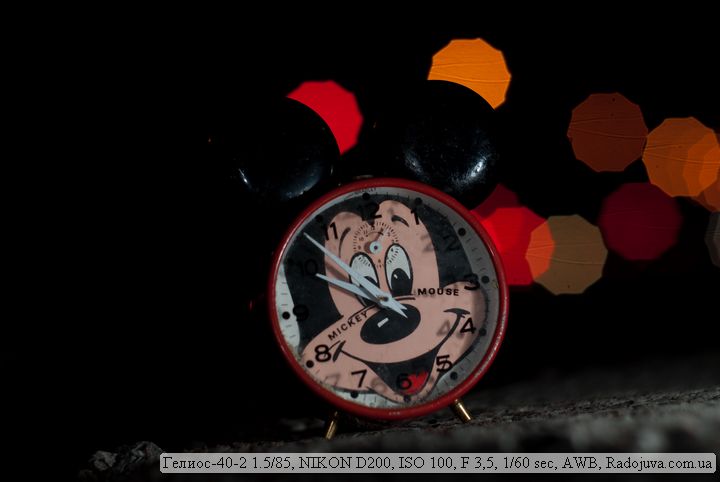
Bokeh on Helios-40-2 85mm F1.5 on aperture F3.5
8. The lens is quite heavy. On amateur lungs of TsZK's there can be a problem with weight balance. I think the same problem was when shooting on film Zeniths. On my kilogram Nikon D200 Helios-40-2 lens sits like a native, without causing inconvenience. Due to the large grip of the handle D200 very easy to control with Helios-40-2. I often have to shoot on a camera heavier in weight than one D200 + Helios-40-2. The weight of the lens and camera avoids movement when shooting handheld at slow shutter speeds.
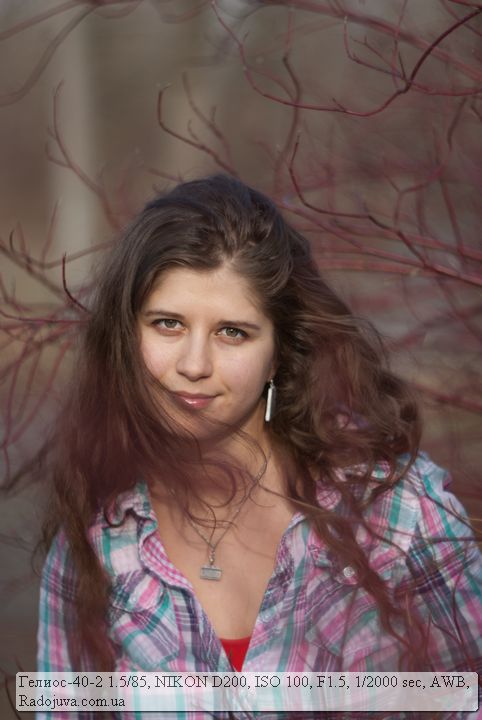
Portrait on Helios-40-2
9. The lens has enlightenment. I have never found reliable information about whether it is MS or not MS. The color of enlightenment is yellow.
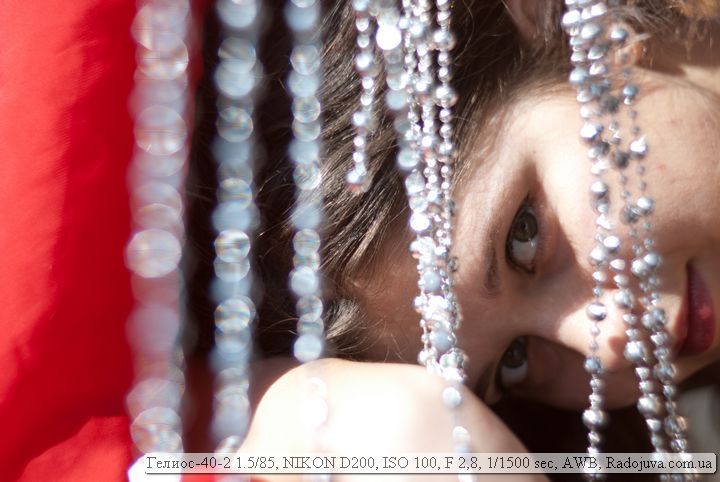
Example photo on a Helios 40-2 lens
Sample photos on Helios-40-2
All sample photos in the review without processing. Convert from RAW to JPEG with Q80% quality (without auto levels, etc.), reduced the size to 1600 * 1200 and imprinted data from EXIF. All sample photos were taken on Nikon D200 (crop factor matrices 1.5x). On my D200 the function key is configured to change the parameters of manual optics, therefore, it is very convenient to close the aperture to any value and immediately make adjustments to EXIF. Only, D200 allows you to set the minimum aperture only for values F1.2, F1.4, F1.8.
UPDATE 1
Examples of photos on HELIOS-40-2-N 1,5 / 85 and the camera Nikon D600 with readers of Radozhiva shared photographer Nelya Rachkova:
UPDATE 2
Examples of photos on HELIOS-40-2 1,5 / 85 (This one) with readers of Radozhiva shared photographer Igor Kurilov.
Each system has its own lens icons - these are lenses that people pray for and want to get. For Nikon, it's Nikon N AF-S Nikkor 85mm 1: 1.4G, for Canon is Canon LENS EF 85mm 1: 1.2 L II USM, and for Soviet Optics - this is Helios-40-2. This is a logical explanation, since the idol should always be.
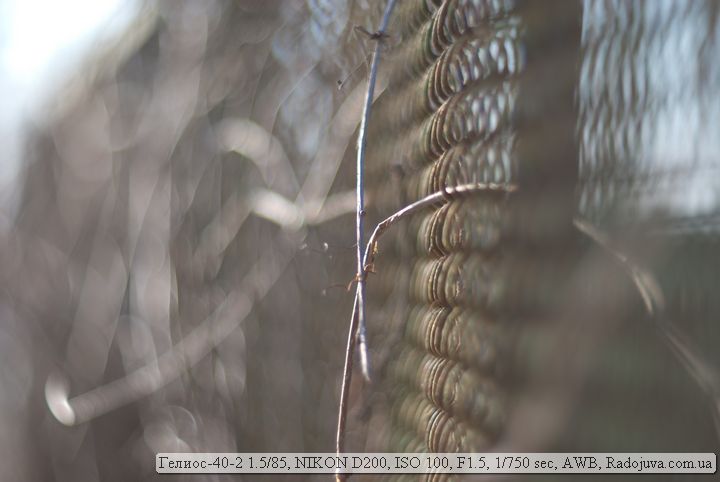
Example photo on a Helios-40-2 lens in strong lateral light
To buy or not to buy Helios-40 (2)?
If you ask such a question, then do not buy. People to whom it will really be useful know for themselves this and it will not be difficult for them to pay a tidy sum for the lens. I absolutely do not recommend Helios-40-2 to beginners who are looking for an addition to the whale lens. The best option for using the lens is in full frame. A full frame is not so cheap, people who shoot it have experience and will be able to get what they need out of Helios-40-2.
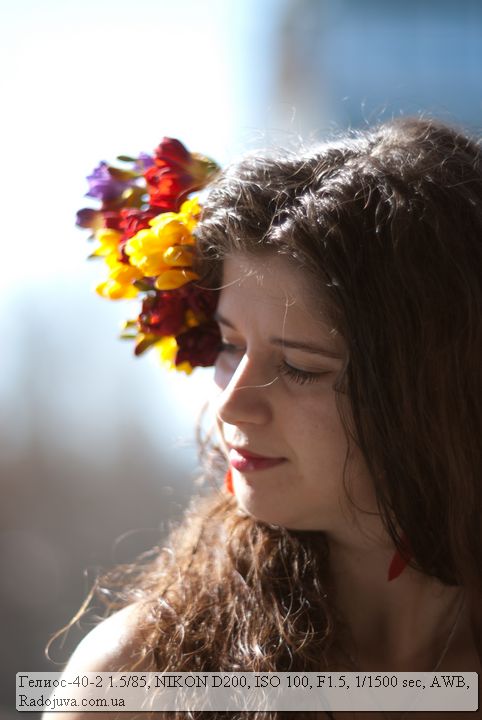
Portrait on Helios 40-2 in strong lateral light
Alternatives
By alternatives, I mean autofocus lenses with similar parameters. If you are looking for an alternative lens, there are many other options. From Soviet-like lenses, I recommend looking at white version of Jupiter-9 85mm F2.0... Jupiter-9 is an excellent portrait lens, it will be enough for a classic portrait. Slightly longer and much darker - medium format MS Vega-28V 2.8 / 120, which allows you to shoot gorgeous portraits. Another great alternative may be a relatively new and very high quality Samyang AE 85mm 1: 1.4 AS IF UMC (And
From the native optics for Nikon, you can look at the classic manual lenses Nikon Nikkor 85mm 1: 1.4 AI-S, Nikon Nikkor 85mm 1: 1.8 (and its many modifications) and Nikon Nikkor 85mm 1: 2. It is quite interesting that all these lenses have better sharpness and contrast characteristics throughout the field of the frame, but they are much less popular than Helios-40-2. Carl Zeiss Planar T * 1.4 / 85 and older Carl Zeiss Planar 1.4 / 85 C / Y options can also be an alternative. From modern autofocus optics, there are many options, but we are talking specifically about manual lenses with manual focus.
All autofocus 85s
Choosing a good 85mm portrait lens is very important for a large number of photographers. I pay a lot of attention to this issue, therefore I have prepared this list of all such autofocus lenses for full frame cameras with F <= 2 and a focal length of about 85 mm.
Nikon (F, Z mounts)
- Nikon 85mm 1: 1.8 AF Nikkor [December 1987]
- Nikon 85mm 1: 1.8D AF Nikkor [March 1994, Thailand/Japan]
- Nikon 85mm 1: 1.4D AF Nikkor [November 1995]
- Nikon 85mm 1: 1.4GN AF-S Nikkor SWM IF Nano Crystal Coat [August 2010]
- Nikon 85mm 1: 1.8G AF-S IF SWM Nikkor [January 2012]
- Nikon Nikkor Z 85mm 1: 1.8 S [July 2019]
- Nikon Nikkor Z 85mm 1: 1.2 S [January 2023]
Canon (EF, RF mounts)
- Canon LENS EF 85mm 1:1.2 L USM [September 1989
- Canon LENS EF 85mm 1: 1.8 USM [July 1992]
- Canon LENS EF 85mm 1:1.2 L II USM [March 2006]
- Canon LENS EF 85mm 1:1.4 L IS USM [November 2017]
- Canon lens RF 85mm F1.2L USM [May 2019]
- Canon lens RF 85mm F1.2L USM DS (DEFOCUS SMOOTHING) [October 2019]
Yongnuo/YnLens (different mounts)
- Yongnuo YN85mm F1.8 (YN85mm F1.8) [9/6, Canon EF, February 2017]
- Yongnuo YN85mm F1.8 (YN85mm F1.8N) [9/6, Nikon F, May 2019]
- Ynlens YN85mm F1.8S DF DSM (YN85mm F1.8S) [9/8, Sony E, August 2020]
- Ynlens YN85mm F1.8R DF DSM (YN85mm F1.8R) [9/8, Canon RF, May 2021]
- Ynlens YN85mm 1:1.8Z DF DSM (YN85mm F1.8Z) [9/8, Nikon Z, March 2022]
- Yongnuo 85F1.8S DF DSM [9/8, Sony E, August 2022]
Sony / Sony Zeiss ZA / Minolta (E / FE, A mount)
- Sony FE 1.4/85 GM (SEL85F18GM) [February 2016]
- Sony FE 1.8/85 (SEL85F18) [February 2017]
- Sony SAL85F14Z / Carl Zeiss Planar 1,4 / 85 ZA T* [June 2006]
- Minolta AF 85mm 1:1.4 (22) (AF lens 85) / Minolta Maxxum / Dynax / G / G+D / G+RS / G+D+LE and other versions of the same lens, A mount [1987]
Sigma (different mounts)
- Sigma EX 85mm 1: 1.4 DG HSM (two sub-versions with different body finishes, for Canon EF, Nikon F, Pentax K, Sony A, February 2010)
- Sigma 85mm 1: 1.4 DG | A [Art] (for Canon EF, Nikon F, Sigma SA, Sony E, Leica L, September 2016)
- Sigma 85mm 1: 1.4 DG DN | A [Art] (for Sony E, Leica L, August 2020)
Viltrox (different mounts)
- Viltrox PFU RBMH 85mm F1.8 STM (Sony E/FE + Fujifilm X, 2018)
- Viltrox AF 85/1.8 STM ED IF (Nikon Z, Canon RF, December 2020)
- Viltrox AF 85/1.8 II STM ED IF (Sony E/FE + Fujifilm X, July 2020, light version XNUMX)
Pentax (K mount)
- SMC Pentax-FA* 1:1.4 85mm IF AUTO FOCUS PENTAX 85 [1992]
- HD PENTAX-D FA * 85mm 1: 1.4 ED SDM AW [May 2020]
Samyang / Rokinon (different mounts)
- Samyang AF 85 / 1.4 EF (for Canon EF, scheme 9/7, June 2018)
- Samyang AF 85/1.4F (for Nikon F, scheme 9/7, April 2019)
- Samyang AF 85 / 1.4 FE (for Sony E, scheme 11/8, March 2019)
- Samyang AF 85 / 1.4 RF (for Canon RF, scheme 11/8, May 2020)
- Samyang AF 85 / 1.4 FE II (for Sony E, scheme 11/8, July 2022)
Meike (Canon EF, Nikon F, Sony E, Nikon Z, FujiFilm X)
- MEIKE 85mm AF 1: 1.8 [review] (Canon EF / Canon EF-S, April 2018)
- MEIKE 85mm AF 1: 1.8 [review] (Nikon F, Aug 2020)
- MEIKE 85mm 1:1.8 Auto Focus Lens FF STM [review] (for Sony FE/E + Nikon Z, Canon RF, FujiFilm X, June 2022 + March 2023)
- MEIKE 85mm 1:1.4 Auto Focus Lens FF STM (for Sony FE/E + Nikon Z, September 2023)
Zeiss (various mounts)
- Zeiss Sonnar 1.8 / 85 T * (Batis 1.8 / 85) [April 2015, built-in stabilizer, Sony E/FE mount, 11/8]
- Carl Zeiss Planar 1,4/85 ZA T* (Sony SAL85F14Z) [June 2006, Sony A/Minolta A mount, 8/7]
- Carl Zeiss Planar 1,4 / 85 T * [November 2002, Contax N mount, 10/9]
Tamron (different mounts)
- Tamron SP 85mm F/1.8 Di VC USD Model F016 (for Canon EF, Nikon F, Sony A [without VC function], March 2016)
Tokina (Sony E / FE mount)
- Tokina atx-m 85mm F1.8 FE (for Sony E, most likely a complete analog Viltrox PFU RBMH 85mm F1.8 STM, January 2020)
AstrHori (Sony E/FE mount)
-
AstrHori AF 85mm 1:1.8 [December 2022]
Panasonic (L mount)
- Panasonic LUMIX S 1: 1.8 / 85mm [November 2020]
Separately, you can still highlight non-classic 85s:
- macro lens Canon Lens RF 85mm F2 MACRO IS STM [2020, RF]
- longer LEICA APO-SUMMICRON-SL 1: 2/90 ASPH. (2018, Leica l)
- less aperture Sony 85 / 2.8 SAM (SAL85f28) [2010, A]
- shorter SMC PENTAX FA 1:1.8 77mm Limited (1997, K)
- shorter HD Pentax-FA 1: 1.8 77mm Limited (2021, K)
- shorter Samyang AF 75 / 1.8 FE (2020, E) + Samyang AF 75/1.8X (2023, X)
- cropped Samsung Lens 1:1.4 85mm ED SSA i-Function [2011, NX]
- cropped and longer FUJIFILM FUJINON LENS SUPER EBC XF 90mm 1: 2 R LM WR [2015, X]
- cropped and shorter Viltrox AF 75/1.2 XF STM ED IF [2022, X, E, Z]
- cropped, less aperture, macro lens Nikon DX AF-S Micro Nikkor 85mm 1: 3.5G ED VR SWM IF Micro 1: 1 [2009, F]
- many 90/2.8 class macro lenses
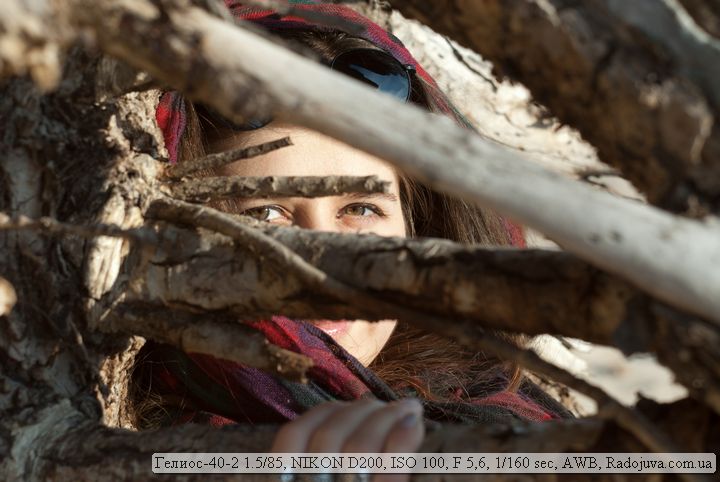
Example photo on Helios 40-2
Image quality on Helios-40-2
Under the image quality of Helios-40-2, some people mean its artistry, and another means its technical perfection. The artistry of the image produced by the lens is very interesting, with a special character. From the technical point of view, the Helios-40-2 lens has a slight vignetting, in the region of 1/3 stop at the corners of the cropped matrix. The vignette is almost invisible to the eye. Lens sharpness differs greatly around the edges and in the center of the frame. In the center of the frame, sharpness is excellent already at F1.5, sharpness at the edges starts at F2.8. Helios-40-2 has an interesting sharpness curve. Loss of sharpness from the center is a characteristic feature of the lens. Wide aperture is sharp enough to create a portrait. It is very interesting that HA (chromatic aberrations) in Helios-40-2 are very low. I was surprised that already at F2.0 Ha completely disappear. For example, Nikon AF Nikkor 85mm f / 1.8D is losing HA only at aperture F4.0. Such an excellent indicator HA on F2.0 there are units of lenses, for example, Nikon 85mm F1.4D etc. Like any other 85mm fast-fix, Helios-40-2 has minimal distortion, which avoids image distortion. On open diaphragms, Helios-40-2 gives light spherical aberrations (blurring of contours) that make the picture airy (see section monocle). The contrast of the lens at wide apertures is not very good. The lens is afraid of side and backlight. Color rendering is slightly lukewarm, but automatic white balance modern cameras can handle this easily. And, of course, bokeh is the fad of the lens. In the out-of-focus area, a motley swirling background is obtained. The circles of confusion are slightly compressed, like ellipses. Most of all, the background of the lens rotates at a fully open aperture at the edges of the frame.
It so happened that all the advantages and disadvantages are collected in Helios-40-2 in an unusual way and make it really a lens with character. In particular, Helios-40-2 is impeccable for creating portraits where smoothness, volumetricity and strong sharpness are not needed (especially for a female portrait).
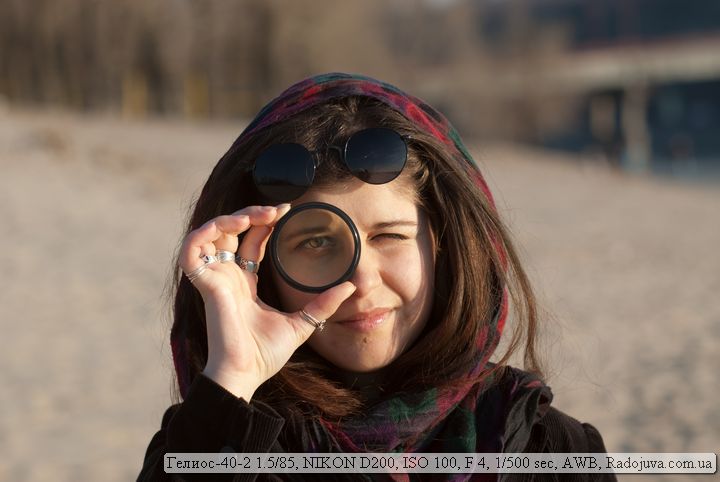
Photo at Helios 40-2
Personal impressions
I liked the lens. I only focused on the green dot in my viewfinder Nikon D200... Aiming is rather difficult, but my experience with manual optics helped me. I highly recommend everyone to use Live View for focusing. Personally, I like the fact that people are trying to squeeze the maximum quality out of the Helios-40-2 with mediocre MTF - this makes you photograph and train your dexterity, and not just press the shutter button. Since I do not have a full-frame camera, it is difficult for me to judge in full. I personally use a lightweight autofocus lens. Nikon AF Nikkor 85mm f / 1.8D, which many have forgotten, but which gives a predictable result. There are many discussions on the Internet about the quality of photographs taken with the Helios-40-2 lens - note that we can only talk about this or that actual copy, since the technique is quite old and many judge by the unsuccessful version of Helios-40-2, many simply never did not hold it in their hands. Also, there are a lot of discussions about its cost - in fact, in order to purchase Helios-40-2, it is enough to shoot 1-2 weddings or several photo sessions, so professionals should not have any problems with this. Amateurs, however, will not always be able to squeeze out all its potential from Helios-40-2 and realize a scene in which the Helios-40-2 lens will be a useful tool for creating photography.

Photo on Helios-40-2
Prices
Now they are selling an updated version of this lens. You can see the real prices for the lens from online stores at this link.
How to use with modern cameras?
Lenses with mounting thread M42 (M42 X 1 / 45.5), such as the lens from this review, are very easy to use on almost any modern digital camera (both SLR and mirrorless), for this it is enough to choose the right adapter (adapter). You do not need to carry out any additional steps to modify the lens.
The cheapest adapters can be found at Aliexpress.com... There are adapters (adapters) with a chip that provide more convenience during shooting, usually chips are used to confirm focus and / or metering exposure, and form the correct EXIF. The chip does not affect the image quality in any way.
For some SLR cameras (for example, with the Nikon F-mount), you need to use adapters with a corrective lens, which allows you to focus correctly at all focusing distances. For any mirrorless cameras, such a lens is not needed, and the adapter is a simple decorated hollow metal tube with an appropriate mount.
For SLR cameras
- Canon: For cameras Canon EOS with bayonet mount EF / EF-S need an M42-Canon EOS adapter, such an adapter with a chip can be found herewithout chip here.
- NIKON: For cameras Nikon DX / FXas well as for cameras Fujifilm и Kodak with a Nikon F mount, you need an M42-Nikon F adapter, you can buy such an adapter without a lens and a chip here, with a lens without a chip herewith chip without lens here, with lens and chip here. Why a lens? Why chip?
- PENTAX: For Pentax cameras with K mount, you need an M42-Pentax K adapter, you can buy such an adapter here.
- SONY/MINOLTA: For cameras with a Sony / Minolta A mount, you need the M42-Sony A adapter, you can find such an adapter without a chip at this linkwith a chip at this link.
- OLYMPUS/PANASONIC/LEICA: For cameras with a 4/3 bayonet mount (not to be confused with Micro 4/3!) You need an M42-4 / 3 adapter, you can buy such an adapter here.
For mirrorless cameras
- SONY: For cameras with 'E'/'FE' mount series SonyNEX и Sony Alpha you need an adapter M42-Sony E (aka M42-Sony Nex), you can find it at this link. An autofocus adapter is also available for these cameras. Techart PRO Leica M - Sony E Autofocus Adapterwhich can be found at this link.
- OLYMPUS / PANASONIC / KODAK / XIAOMI: For cameras with a bayonet mount Micro 4/3 (Micro 4:3) you need an adapter M42-Micro 4/3, you can find it at this link.
- CANON M: For cameras with Canon EF-M mount need adapter M42-Canon M, it can be found at this link.
- CANON R and RF-S: For cameras with Canon RF mount need adapter M42-Canon R, it can be found at this link.
- Nikon 1: For cameras Nikon 1 Series need adapter M42-Nikon 1, you can find it at this link.
- Nikon Z: For cameras Nikon Z series (FX/DX) need an adapter M42-Nikon Z, it can be found at this link.
- FUJIFILM X: For cameras with mount X need an M42-Fuji X adapter, you can find it at this link.
- FUJIFILM GFX: For medium format cameras G-mount need M42-Fuji GFX adapter, you can find it at this link.
- SAMSUNG: For cameras with NX mount, you need an M42-Samsung NX adapter, you can find it at this link. There are no adapters for the NX mini camera yet.
- PENTAX: For Q-mount cameras, you need an M42-Pentax Q adapter, you can find it at this link.
- SIGMA / PANASONIC / LEICA: For cameras with L mount you need an M42-Leica L adapter, you can find it at this link.
- LEICA: For cameras with a bayonet mount Leica M need adapter M42-L / M, you can find it at this link.
If you have any questions on compatibility and adapters - ask in the comments (comments do not require any registration at all).
Hack and predictor Aviator
Helios-40-2 is not the best lens from a technical point of view due to its sharpness only in the center of the frame at F1.5. From an artistic point of view, it has an unrivaled design with the legendary twisted bokeh. Anyway, Helios-40-2 at full frame will be able to interest professionals... For fans with a cropped matrix - I do not recommend it.
Familiarity with the Soviet Helios brand lenses I recommend starting with an inexpensive and common lens Helios-44-2 2/58 (aka HELIOS-44-2 2/58). The following links can look at modern lenses Zenitar и HELIOS.
Comments on this post do not require registration. Anyone can leave a comment. Many different photographic equipment can be found on AliExpress.
Material prepared Arkady Shapoval. Training/Consultations | Youtube | Facebook | Instagram | Twitter | Telegram

















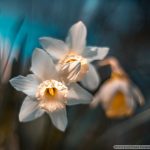
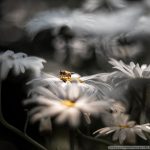









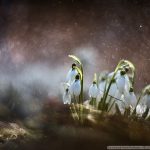

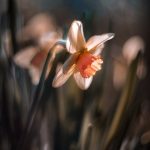
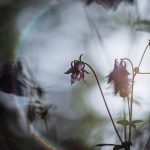
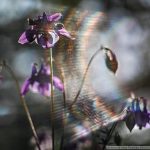



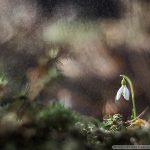

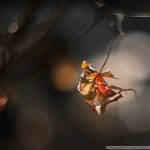



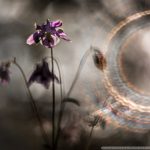

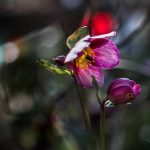












It would be great to saw through a modern lens so that it could make twisted bokeh and the same Helios would be, only with good contrast and sharpness. All the same, torsion is not a consequence of a mega-class and accurate design, but rather a method to hide the shortcomings of Helios.
I will just leave this one here.
http://evtifeev.com/8897-gelios-40-2-85-1-5-vs-carl-zeiss-planar-85-1-4-c-y.html
A link to this comparison has long been in my review, just be careful.
I've seen reviews of many fifty dollars on the same site. The only criterion is sharpness. And to shoot banks and walls with Helios is nonsense. It is necessary to compare the finished result, that is, portraits and not to peel the pores on the skin, but the overall effect of the photograph.
In your opinion, is it worth buying a new Helios, already Russian-made? Or search Soviet?
Look old. I have 40 tons. I like it more. I don’t know if it’s a lie or not, as if the lens units on the new Helios are delivered to us by the Chinese. Everything can be .. Look, of course, Soviet, as it will be more reliable.
Hello! Please tell me which Soviet lens is more suitable for Nikon D5100?
Lens Guidelines for Nikon CZK https://radojuva.com.ua/2011/04/optika-na-nikon/#what-mount
I purchased and tested this lens a little, but with a Nikon F mount: http://foto-olimp.ucoz.ru/publ/sravnenie_legendarnogo_ms_gelios_40_2_i_nikkor_50_mm_1_8g/6-1-0-5
there is helios 40 silver in the case on the m39 + ring on the m42 full set price 20 tr boss.wret@mail.ru Voronezh write or call 9003023540
http://www.shop.zenit-foto.ru/ob-ektivy = 12700 RUB = 3200.99239 UAH = WHERE A HEALTHY MIND?
This is the price of Nikkor`a 85D + add another $ 100 and buy 85G, and you will have a lot of happiness.
That's right, 12700 new glass ...
http://www.shop.zenit-foto.ru/ob-ektivy
I read the whole Internet about this lens and decided to order it on the KMZ website. The opinion is not unambiguous. From delight to complete disappointment. Truly a lens with character. You need to adapt to it. If you get into sharpness, then the pictures are just wonderful, but getting into sharpness with an open aperture is sooo difficult.
I bought a new Nikon with a bayonet,
after a month of training, I got used to the trick,
marriage has become very small
even in motion it is necessary to catch a few sharp frames.
The drawing is airy, the bokeh is fabulous, for which he took his holy fool.
cover on the stop ...
Nonsense. The construct is good. Everything else is Shit. Will be autofocus at the same price - you can see. And so the native Canon 50 / 1.4 (and at a price less) is super. Helios was not lying around.
It is immediately clear that you are such a photographer - as this well-deserved lens was called, the blind just cannot distinguish his drawing.
Good afternoon, tell me please, I recently bought a new Helios 40-2 85 mm f / 1.5, release - September 2013. Used on Mark II. From testing, I have a rather mixed opinion. I have not previously filmed with mechanics, I used only autofocus. A lot has already been said about the drawing, it is really very interesting, but I have big problems with the sharpness. In the viewfinder, it seems to be sharp, clear, and when viewing a photo on the display, there may be no focus at all (at apertures of 1,5 and 2 mm), and if there is, then it is doubtful and far from ideal. Can you please tell me if you can fix this by adjusting or some other method, or is it due to a lack of experience in photographing in manual focus mode? Or maybe I got a defective copy (if you can call it a marriage at all)?
Thank you.
By zooming in Live viev this problem disappears
If there is an add-on to Canon Magic Magic Lantern Firmware firmware, then it is good and accurate enough to focus in the LiveView by the peaks (points) of contrast.
There are specials. focusing screens for shooting with manual glasses. In addition, stop looking for sharpness in Helios by 1,5, it will not be there, the depth of field is so small that it’s almost impossible to get it, and sharpness is not needed there, in my opinion.
There is still the option that your diopters are not set correctly. It was a decent time before I realized this at home.
It is easy to set up, put on a proven lens (I used Canon 50mm 1,4), take a book, newspaper with text of different sizes, set the aperture value to 1.4, put the camera on a tripod. Do autofocus on the text, look, check that you can clearly see the text. If necessary, adjust the diopter values until you see the text as clearly as possible. The method is effective, it allows you to get rid of 60% of the marriage when shooting by a manual. Regarding adjustment - what is there to adjust? No autofocus and no motor.
Hello, Arkady. You did not come across new helios (those that are already under the bayonet mount)? I tried today to fasten this to my Nikon. The lens in the bayonet mounted, but the latch did not snap. Only half a millimeter did not reach. Do you know, is this a special case, or is it all? thanks.
Bought a new lens in the Helios brand store. On the D800, too, did not immediately get up. I tried 4 lenses. It turned out that you need to make a little effort, but not too much! How critical this is for the camera is still unknown. The quality of the picture is simply delighted. He worked with Kaleinar, so the marriage from focus errors is quite small, even through the viewfinder. A little unusual zoom ring, you need to twist in the opposite direction from the usual Nikorov. Strongly catches hares. I did not understand which lens hood to look for. It seems to be 67 mm, but on the Internet, opinions differ, I found more reports about remaking such blends under 66mm. Until you try, you don’t know :) I'll go to the store tomorrow.
Good evening, Arkady. You wrote that the difference between Helios-40 and Helios-40-2 will be a separate review. I’ve been waiting for a long time, don’t you tell me, will it still be or not? In general, I would like not only differences, but also a full review of Helios-40. Thanks.
Arkady, so how about the answer? Waiting a long time
Send G-40, I will do a review.
"Are you photographing bokeh or what's in the foreground?"
Personally, I photograph everything.
About g-40, yes, there is a lot of things in it that modern optics do better with, it does not hold back light, the thread for filters is not standard, the ring is tight, heavy ...
But here is a photo of him none of the modern will not repeat.
A few tips - replace the grease of the helicoid with a liquid one, an adapter can easily be made from a pair of filters in its kit by cutting off the threaded ring from one and screwing it into the partially unscrewed nut of the other, holding the filter housing by 72 between them.
Well, there is at least a filter at least a hood ...
At the expense of focusing - catch the confirmation ring and bring the camera back and forth, and in a confident confirmation, compose and shoot.
You can use the viewfinder and the camera magnifier by x5 or x10.
I mean that everything can be solved in principle, if there is a desire.
And about the lens - a mental lens, not for everything, and not for everyone.
Not everyone loves poetry, right?
Helios - 40 is poetry among prose ...
Tell me how to move the tripod socket side down ??
sunsya! To bring some thoughts to the review. Zarah.
http://ru.wikipedia.org/wiki/%D0%93%D0%B5%D0%BB%D0%B8%D0%BE%D1%81_%28%D0%BE%D0%B1%D1%8A%D0%B5%D0%BA%D1%82%D0%B8%D0%B2%29
Helios Review on Wikipedia.
Helios 40-2 type of connection to the camera: thread M42x1 weight: 950 g.
Helios 40-2C with Canon EF mount weight: 820 g and 7 mm shorter. What is the difference, etc. ….
Judging by the photo does not have a tripod socket: http://www.zenit-foto.ru/produkt/fototekhnika/11-produktsiya/358-gelios-40-2 .According to Helios 40-2 reviews with M42x1 thread, it’s “more interesting” that you advise.
No different and no more interesting. Everything is the same, only more convenient. The clamp does not interfere - it is not there and you do not need to bother with adapters because some adapters have a feature of "backlash".
Hello everyone! I bought yesterday the option of 62 years of release. It is very pleasing, I knew that I was taking it. But who will tell you how to move the tripod mount, otherwise it sticks out on my right lens ????
So unscrew the latch, tidy such garbage and move it.
I took from a friend to shoot Helios 40-2 (86g.v.) I liked it to hell. Carcass Canon 30d. Before that, I shot mostly on 70-200 Elka (4) And I traded this sad Elka for Helios 40-t (000124) To say that I like this lens, to say nothing! Glass is just magical! I’m dizzy when you look at the photo. It's just super! The photo is live, voluminous and I will repeat it again, live! Of course they write different things, specialists of different stripes, let them write, the paper will endure, all the numerous autofocus shit will sink into oblivion, and this lens will work, anyway. I’ve been doing photography for almost my whole life, I’ve tried many glasses, really a lot, I assure you, but there wasn’t one like the 40th, I heard, but I didn’t have to do it somehow. Divine! Again, this glass is not for nutcrackers. Thoughtfully, thoughtfully. But the result will exceed all expectations. Do not listen to anyone, you want good photos, look at the magpie. Good luck to all the staff!
Show
Thank you Arkady for a good review. I got infected I used a new condition, a problem on KENON, with sharpness I had to buy Sony a65 and misses disappeared 100% MISSION AIM !!! For autofocus-kenon! for the Sony manual !!!!
This is because the matrix is stabilized in Sony. This is extremely important for manuals in which there is no stabilizer by default. With negligible depth of field values, on an open aperture, any shake of hands (with this weight - a very obvious fact) will lead to blur, which in Sony is stabilized due to such a function in the matrix itself. This dormouse is certainly good.
Hello, I read the reviews of some crooked comrades who criticize the lens and I want to tell them - you don't know how to shoot, ask how! If it doesn't work - put it aside or sell it! But no need to find fault with "Legend", just look at the results of the work of people who know how to shoot them!
Information for those looking for ways to get into DOF at f / 1,5. I will add to the post of the previous comment: on Sony cameras with a translucent mirror, there are several chips that greatly simplify life for manual lenses - contour picking, the focus area is highlighted for example in white, a photo stabilizer in a carcass, if you take a stitched adapter for a focal 85, you get not only AF confirmation, but also the correct operation of the stub 2-3 stops of exposure (critical when shooting handheld). Well, the glass is on a hollow frame, so it is fully revealed on FF carcasses. The glass is super, but before buying, take something cheap (Helios 44) to drive in the manual so that there are no disappointments for the expensive ...
Arkady, we need your advice! Googled - did not find it.
Tell me, will you get the effect of automatic aperture change if you glue a "darling" (or how to correctly name the part with the chip) from Lushnikov's dandelion on Helios 40-2H (Nikon tail, 2013). (or even the adapter itself?) D700 carcass. I saw that you did this with Kaleinar 100 2.8, here too "N" Series ... hope settled.
There is such a video http://www.youtube.com/watch?v=MbOnYtufWZk but here D70, we are talking about some kind of "jumping rope". I can hardly guess what it is…. I guess the jump rope is what we "squeeze" with our finger on the lens to open the aperture and look at the glass at the light. And it is not clear from the video - is the person talking about controlling the jump rope on the D70 or does he mean that there is no jump rope on Helios? But there is a preset aperture ring, maybe there is a jump rope? ))
Sound logic, however, says that since the aperture ring is in front and the entire structure consists of metal and glass, then in the lens construction there is hardly a possibility of changing the aperture on the tail - "jump rope" ...
I'm going to buy, the mood is serious, but this question is haunting. Thank you so much in advance. I read all your reviews on Soviet technology, I often reread and get inspired. Well done keep it up!)
They understood everything correctly, there are no jumpers, it is possible to close and open the diaphragm on the Helios 40-2H lens only manually using the diaphragm ring. I’ll add that the lens was updated, but not completely :)
Hello! I can't understand - on the d700 in the viewfinder, will the green focusing point work with the new 40-2n as an aid, or not?
Yes, it will.
KMZ raised the prices, now the subject for the price has exceeded 14 thousand rubles. Logically, for all import prices soared, Chegozh and domestic can not be raised. Good luck with their sales, but now I'm definitely a pass.
Arkady, add the 2015 version to the review http://www.yarkiy.ru/goods/11597-gelios-40-2-85mm-f1_5-nikon-new
It is believed that everything that could be improved has already been improved in models after 2012. Now it's just a restyle. It would be better if the KMZ assembly culture was increased, instead of a banal restyling. Dust inside a new lens is not good at all. The author's remarks that the lens "reveals itself only to a full frame" are amusing. I have read a lot of similar "smart" thoughts about this lens, even bought it at the cop with caution.
In reality, there are problems (I doubt that this can be called real problems), only 2:
1. Smaller viewing angle - of course. Walking around with your feet for better framing will take a little more. No more.
2. Without a special focusing screen (for manual lenses it is better to use it), it is more difficult to focus - on cropped DSLRs the viewfinder is, of course, not so “big and bright”.
Regarding the first point - already answered - you just have to walk a little more. Regarding the second point - there is Live View, with magnification you can focus as accurately as possible.
What else could be the differences in using this lens on crop I personally do not know. The bokeh is the same, aberrations, too, disappear at the same aperture. Maybe the depth of field is half a millimeter larger with an aperture value of 1.5?